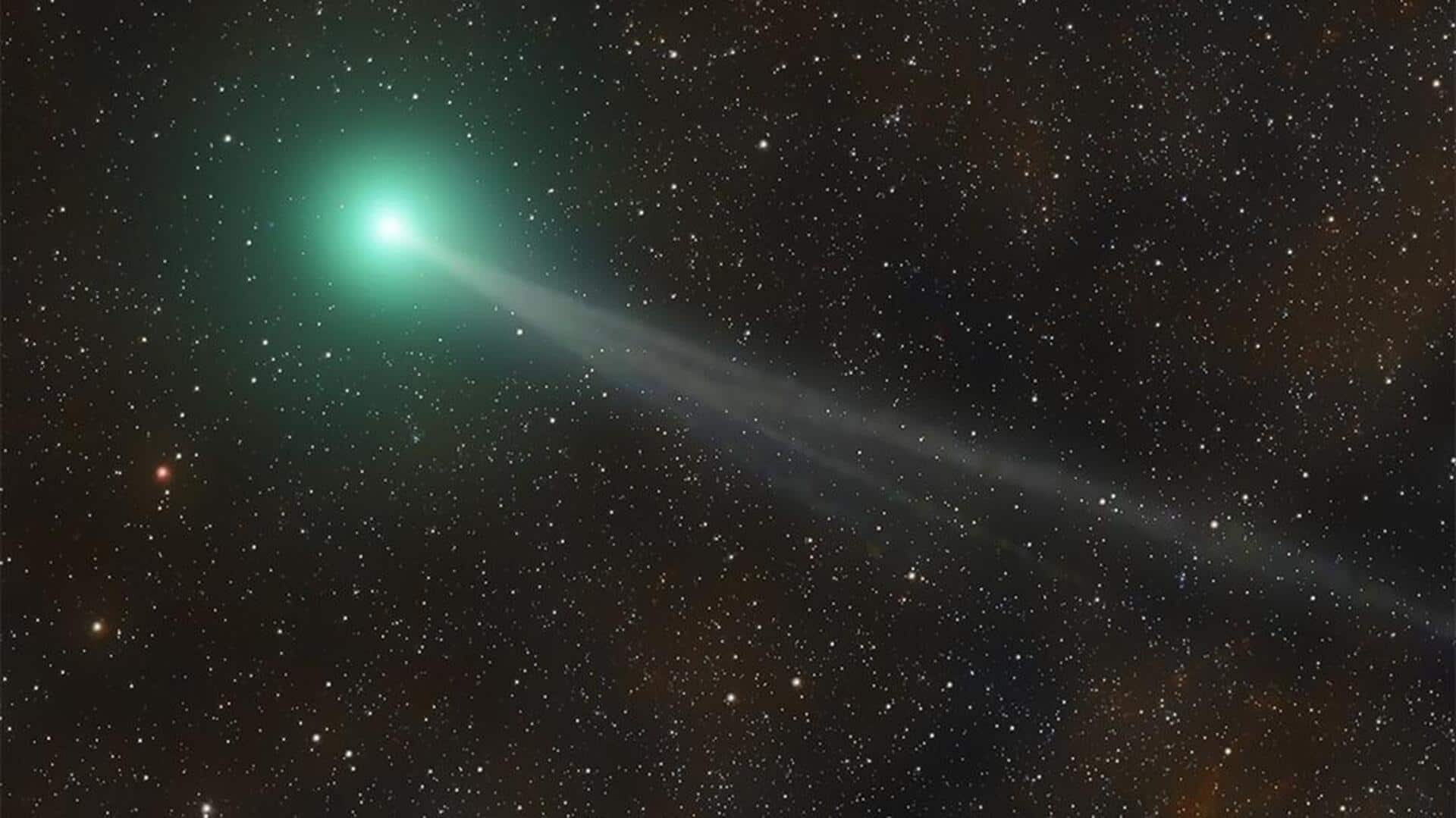
Comet Lemmon, seen once in 1,350 years, will appear soon
What's the story
A rare cosmic traveler, Comet C/2025 A6 (Lemmon), is on its way toward Earth this month. The comet, which has an orbital period of about 1,350 years, will be making a close approach that could make it visible without telescopes. Scientists say this celestial visitor will offer a spectacular show before heading back into deep space.
Celestial path
Lemmon will pass closest to Earth on October 21
Comet Lemmon was first spotted on January 3 by astronomers at the Mt. Lemmon SkyCenter in Arizona. The comet, originating from the Oort Cloud—a region of icy bodies at the solar system's edge—is traveling at nearly 209,300km/h toward the Sun and Earth. It will make its closest approach to Earth on October 21, coming within 56 million miles of our planet.
Unique hue
The comet's emerald glow comes from diatomic carbon
The emerald coma, or the gas and dust cloud surrounding Comet Lemmon, is one of its most unique features. The green glow is believed to be caused by diatomic carbon, a molecule with two carbon atoms bonded together. When sunlight hits this molecule, it emits a bright green light. The comet also has a colorful tail made up of gas, ice, and dust particles that are pushed away by solar radiation.
Viewing tips
How and when to see the comet
Comet Lemmon is already visible with basic stargazing equipment and may become visible to the naked eye as it brightens in the coming weeks. Astronomers recommend looking for it in the constellation Lynx, located between Jupiter and the Big Dipper. The best time to catch a glimpse of this celestial phenomenon will be before dawn or just after dusk, ejespecially in mid-October when the comet should be at its brightest.